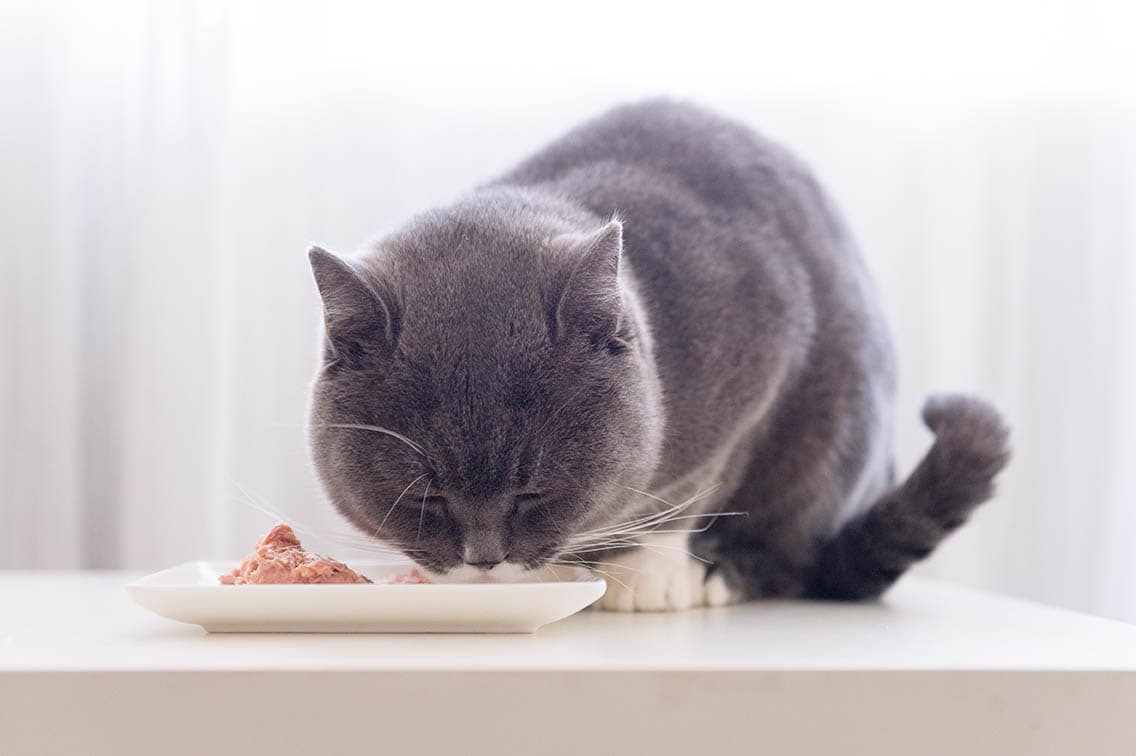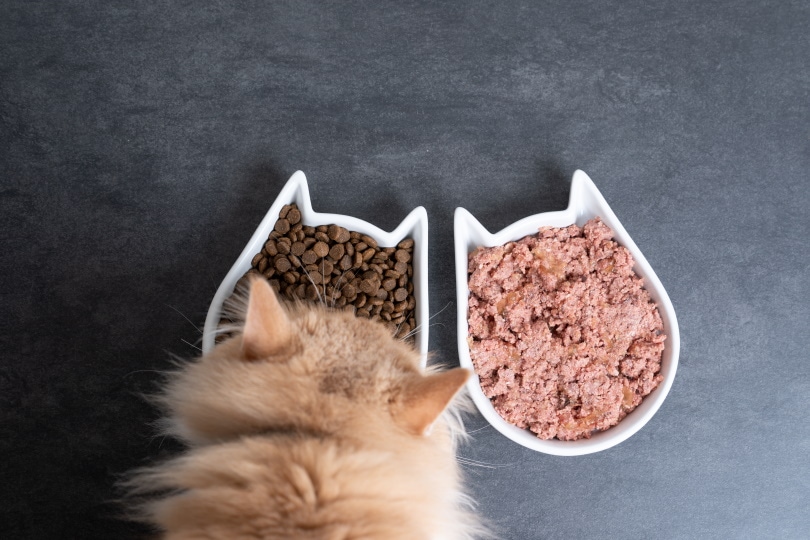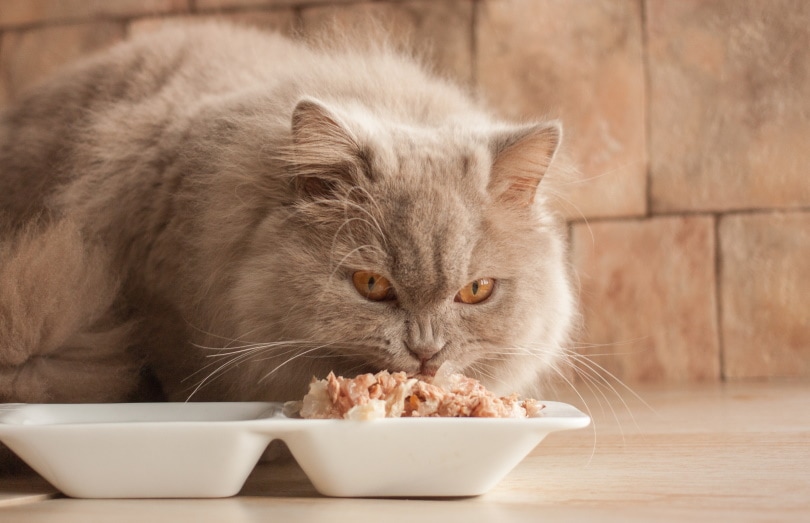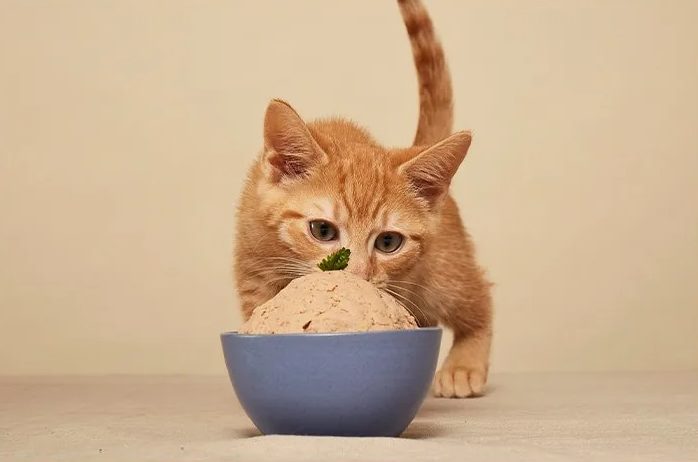Diabetes is becoming one of the most common illnesses globally, not just in people but also in cats. With more cats developing diabetes than ever, pet parents are left scouring reviews and wondering what the best way to handle their cats’ diabetes is.
Weight management and diet are the best ways to get control over diabetes. Your cat needs to be fed a diet appropriate for its needs. Food high in protein and low in carbohydrates is the best option for cats, especially in the case of cats with diabetes, since protein causes fewer spikes in blood sugar levels.
While prescription diets can be fed, they’re not necessarily required for cats with diabetes; any food with high-quality protein content and low in carbohydrates can be used for cats with diabetes. However, if your diabetic cat is already on insulin treatment, it is very likely that after switching to a low-carbohydrate diet your cat will require less insulin or in many cases any at all. It is very important to monitor your cat’s blood glucose right after switching to a low-carbohydrate diet and to make insulin dose adjustments as required.
A Quick Comparison of Our Winners in 2024
| Image | Product | Details | ||
|---|---|---|---|---|
| Best Overall |

|
Smalls Fresh Cat Food Subscription |
|
Click to Save 40% Use code: PetKeen2023 |
| Budget Buy |

|
Purina Pro Plan Vet Diet Cat Food |
|
Check Price |

|
Wellness CORE Canned Cat Food |
|
Check Price | |

|
Wysong Epigen Salmon Canned Cat Food |
|
Check Price | |

|
Instinct Original Grain-free Pate Cat Food |
|
Check Price |
The 11 Best Diabetic Cat Foods
1. Smalls Human Grade Fresh Cat Food Subscription – Best Overall
| Food Type: | Fresh |
| Packaging Amount: | 11.5 oz |
| Other Diet Specialties: | Grain-free |
Having a cat that’s diagnosed with diabetes can be difficult, but one of the best ways to help manage the disease is to provide your cat with the proper nutrition. Smalls cat food can help you with this. One of the first signs of diabetes in cats is thirstiness and an increase in appetite. All Smalls cat food is human-grade and contains a sufficient amount of moisture to help improve your cat’s daily hydration levels.
They have different minced and pate meat mixtures to give your cat. Their human-grade cat food is satiating and full of nutrients that will give your cat all of the vitamins and minerals that it needs to get through the day. The only downsides to this food are that it is a subscription service, and the food isn’t available in stores.
2. Purina Pro Plan Vet Diet DM Canned Cat Food – Budget Buy
| Food Type: | Canned |
| Packaging Amount: | 5-oz cans |
| Other Diet Specialties: | Pea-free |
Our budget pick is Purina Pro Plan: Veterinary Diets DM. They have both canned and kibble options for diabetic cats and come packaged at a reasonable price point. Purina Pro Plan’s Veterinary Diets do their best to mimic prescription diets, and they have several options for different health issues.
Purina Pro Plan’s Veterinary Diets are high-protein and pea-free. Unfortunately, these diets aren’t entirely grain-free, even if they are high-protein, which can be a turn-off for many pet parents. However, few other options have diabetic support and offer wet and dry food at a reasonable price.
3. Wellness CORE Grain-free Classic Pate Cat Food
| Food Type: | Canned |
| Packaging Amount: | 3-oz and 5.5-oz cans |
| Other Diet Specialties: | Grain-free |
Wellness is one of the best premium pet food companies. They specialize in grain-free formulas, and their CORE line is their high protein variety. Their grain-free food is low-carb and all-natural, making it an excellent choice for pet parents of diabetic cats.
It is a little more expensive than the average but pet parents who choose it will pay for a high-quality veterinarian-recommended diet for their pets.
4. Wysong Epigen Salmon Canine/Feline Canned Cat Food
| Food Type: | Canned |
| Packaging Amount: | 9-oz can |
| Other Diet Specialties: | Grain-free |
Wysong Epigen is an up-and-coming brand in the pet food scene. They feature 95% natural meat formulas and contain the usual filler ingredients seen in commercial pet foods. This formulation makes them a perfect choice for any pet parents of diabetic cats.
Their 12.9-ounce cans will last any pet parent for several feedings, especially with diabetic cats who get particular food portions and come in at a competitive price point. Unfortunately, as with any up-and-coming brand, only time will tell how the brand fares. But pet parents who have taken the leap of faith have expressed satisfaction with Wysong Epigen’s foods.
5. Instinct Original Grain-free Pate Canned Cat Food
| Food Type: | Canned |
| Packaging Amount: | 5-oz cans |
| Other Diet Specialties: | Grain-free |
Instinct’s food has recently become popular among owners and veterinarians for its cost-efficiency and high-protein, grain-free formulas. Their foods are appropriate for cats with diabetes as they feature high-protein and low-carbohydrate recipes.
They have a dry food option that features a freeze-dried raw coating to increase the protein levels and help your cat get species-appropriate nutrition, even in kibble form. The biggest downside to this food is that many pet parents report a powerful odor.
6. Tiki Cat Ahi Tuna & Crab Canned Cat Food
| Food Type: | Canned |
| Packaging Amount: | 6-oz cans |
| Other Diet Specialties: | Grain-free |
It’s hard to get a better marriage of price and formula than Tiki Cat. Their recipes are high in protein and low in carbohydrates, making them perfect for feeding a diabetic cat. These all come packaged into an attractive can at a competitive price.
Tiki Cat offers many different types of meat, including fish, poultry, and beef, and they have an assortment of variety packs so that your cat is never bored at mealtimes. They offer dry and wet food, but their dry food options are costly compared to their wet food options.
7. Weruva Cats in the Kitchen Chicken Pumpkin Can Cat Food
| Food Type: | Canned |
| Packaging Amount: | 3-oz, 6-oz, and 10-oz cans |
| Other Diet Specialties: | Grain-free |
Weruva’s Cats in the Kitchen canned food features a starch-free, high-protein diet that’s perfect for a diabetic cat. Their foods are entirely grain and gluten-free. The company prides itself on its comprehensive and transparent ingredient list which shows that its foods are made of high-quality ingredients.
Weruva’s foods come in various flavors and size that pet parents can choose from based on their needs and budget.
8. Royal Canin Vet Diet Glycobalance Cat Food
| Food Type: | Canned |
| Packaging Amount: | 3-oz cans |
| Other Diet Specialties: | High protein, low starch |
Though they’re more expensive than most other pet foods on the market in general, Royal Canin is a trusted pet food company. Their Glycobalance formula is specially formulated for cats who need diabetic support.
The Glycobalance diet comes in both dry and canned forms. It features a low starch content to help control your cat’s glycemic index and high protein to keep your cat satiated and help them retain its muscle mass.
9. Hill’s Prescription Diet m/d GlucoSupport Canned Cat Food
| Food Type: | Canned |
| Packaging Amount: | 5-oz cans |
| Other Diet Specialties: | None |
Hill’s Prescription Diet is another food formulated with diabetic cats in mind. It is a high-protein and low-carbohydrate formula that comes in both can and kibble forms. However, none of Hill’s foods are grain-free, so the carbohydrate content may be higher than some other options on the list.
Many pet parents are familiar with and trust Hill’s Science Diet, which aims to emulate medical pet diets like their prescription diet. Those who trust and love Science Diet can rest assured that Hill’s Prescription diet is made with the same love and care.
10. Merrick Purrfect Bistro Poultry Variety Canned Cat Food
| Food Type: | Canned |
| Packaging Amount: | 5-oz cans |
| Other Diet Specialties: | Grain-free |
Merrick is another favorite amongst pet parents, especially those who favor products made in the USA. Merrick’s affordable grain-free foods have made getting our pets grain-free nutrition more accessible than ever.
Merrick Purrfect Bistro comes in both canned and dry forms. However, some have pointed out that Merrick’s formulas are affordable because they contain various low-quality ingredients and fillers that higher-quality foods do not.
11. Blue Buffalo Wilderness Wild Delights Canned Cat Food
| Food Type: | Canned |
| Packaging Amount: | 3-oz and 5.5-oz cans |
| Other Diet Specialties: | Grain-free |
Blue Buffalo is another favorite brand amongst pet parents, and their Wilderness line is their high-protein line. The Wilderness line is appropriate in its dietary contents for a diabetic cat.
Wilderness comes in both canned and dry food mixes, but the canned food will be more appropriate for your diabetic cat. The dry food is also about 25% carbohydrates, so it will only be suitable for a cat whose diabetes is well controlled by medication.
Buyer’s Guide: Finding the Best Diabetic Cat Foods
When buying food to assist with a health problem, you must understand the inner workings of the issue. This knowledge allows you to best select products that will help control the issue. Understanding the exact organs and systems that diabetes affects can help you choose the right food for your needs.

What Is Feline Diabetes?
Most cases of feline diabetes are similar to the issues of type 2 diabetes in humans. In cats with diabetes, the body’s cells no longer respond adequately to insulin, the compound that allows sugar to enter the cells and be used as fuel and broken down into other necessary compounds.
The pancreas creates more insulin to compensate for this deficiency, but this added stress eventually wears the pancreas out, and the organ fails. Once the pancreas has failed, the cat will need insulin shots or oral insulin regulators to control its blood glucose levels.
Left untreated, the body is unable to function correctly as it has no way of regulating blood glucose levels.
What Factors Contribute to Feline Diabetes?
Obesity is one of the biggest factors in feline diabetes. Cats are very lazy by nature, and the unfortunate side effect of indoor cat care is that they no longer need to hunt for food, and they are at significant risk of becoming overweight.
If your cat has diabetes, controlling its weight is going to be the biggest mitigating factor. Fat cells produce hormones that make the body less sensitive to insulin. By controlling or lowering your cat’s weight, and limiting the carbohydrate content in their diet, you can put their diabetes into remission.
However, it is very important to remember to lower your cat’s weight slowly and to adjust the insulin treatment with your cat’s vet accordingly, as a cat on a low carbohydrate diet might stop needing insulin eventually. Blood glucose measurements and treatment adjustments need to be implemented when you change your diabetic cat’s diet.

Achieving Remission
By controlling or lowering your cat’s weight, you can put its diabetes into remission. Remission is achieved when a cat maintains a stable glucose level over four weeks without needing insulin shots or oral insulin regulators.
Not all cats go into remission, but those that do can stay there for several years or even the rest of their lives. Some studies state that between 17% and 67% of cats go into remission after insulin therapy, and others posit that remission is possible for at least 90% of cases.
What Makes a Food Diabetic Friendly?
Diabetic-friendly foods are high in proteins and low in carbohydrates and sugars. Carbohydrates and sugars cause spikes in blood sugar levels that can overwhelm the pancreas and the body and send the cat into diabetic shock.
While many veterinary diets claim to be specially formulated for diabetic cats, any low-carb/high-quality protein food, when fed in moderation, will be acceptable for your cat. Before making any decision, make sure you consult your veterinarian, as they’ll be able to help guide you to the correct food choices and help you portion out foods based on your cat’s insulin therapy.
Veterinarians also recommend feeding your diabetic cat wet food only. Dry foods have a more extensive carbohydrate content than wet foods, some of which contain no carbohydrates at all. While dry food can be made with low carbohydrate content, wet foods are better on average for a diabetic cat.

Feeding a Diabetic Cat
Diabetic cats should be fed on a set schedule. They’ll get insulin therapy twice a day, twelve hours apart, and their meals should coincide with their therapy schedule. You’ll want to feed your cats right before you give your diabetic cat their insulin so that the diabetic cat gets the most out of its insulin therapy. Again, regularly monitoring your cat’s blood glucose and making treatment adjustments is extremely important in the management of diabetic cats, especially after a change to a low-carb diet.
If you have more than one cat, you’ll need to feed them separately to avoid food stealing, and you won’t be able to free-feed your other cats anymore. Adjusting all of your cats to a feeding schedule can be difficult, but it will be the best for the health of your diabetic cat.
Treats given to a diabetic cat should be limited if given at all. Treats need to make up 10% or less of your cat’s diet because they can interfere with the feeding schedule. Good options for treats for a diabetic cat are freeze-dried chicken, beef, salmon, tuna, and liver. These treats are high in protein and contain little if any, carbohydrates.
- NO MESS - The 360° tray on this cat food and water bowl set has a raised design to catch and...
- WHISKER FRIENDLY - Shallow and wide metal containers with flat bottoms ensure your kitty can enjoy...
- CHEW-SAFE MATERIALS - Kittens and cats love chewing on silicone and soft rubber - but it's a choking...
High-quality cat food is an important part of fostering a long and healthy life for your cat but the right cat food and water dish will promote good posture, offer whisker relief, and aid in good digestion. The Hepper NomNom Cat Bowl is our favorite bowl since it offers all of the above and is beautifully crafted to meet modern home stylings. The wide tray design catches any food and water spills and the entire setup is dishwasher safe. Learn more about the Hepper NomNom Cat Bowl here.
At Pet Keen, we’ve admired Hepper for many years and decided to take a controlling ownership interest so that we could benefit from the outstanding designs of this cool cat company!
Final Thoughts
There are lots of options available for pet parents of diabetic cats. For the best product overall, we recommend Smalls Human-Grade Fresh Cat Food. For those who need lower-budget food, Purina Pro Plan offers excellent value for the price.
No matter what food you choose, remember to consult with your veterinarian so that they can build a comprehensive meal plan to keep your cat healthy!
Featured Image Credit: Rutina, Shutterstock























